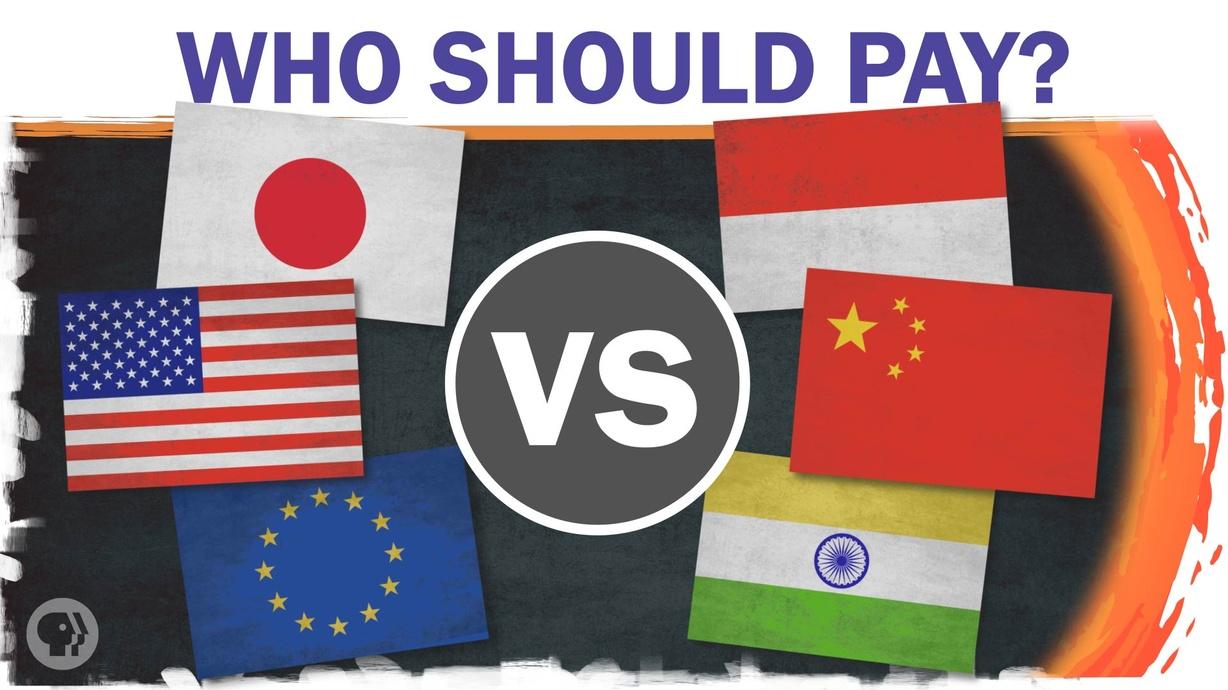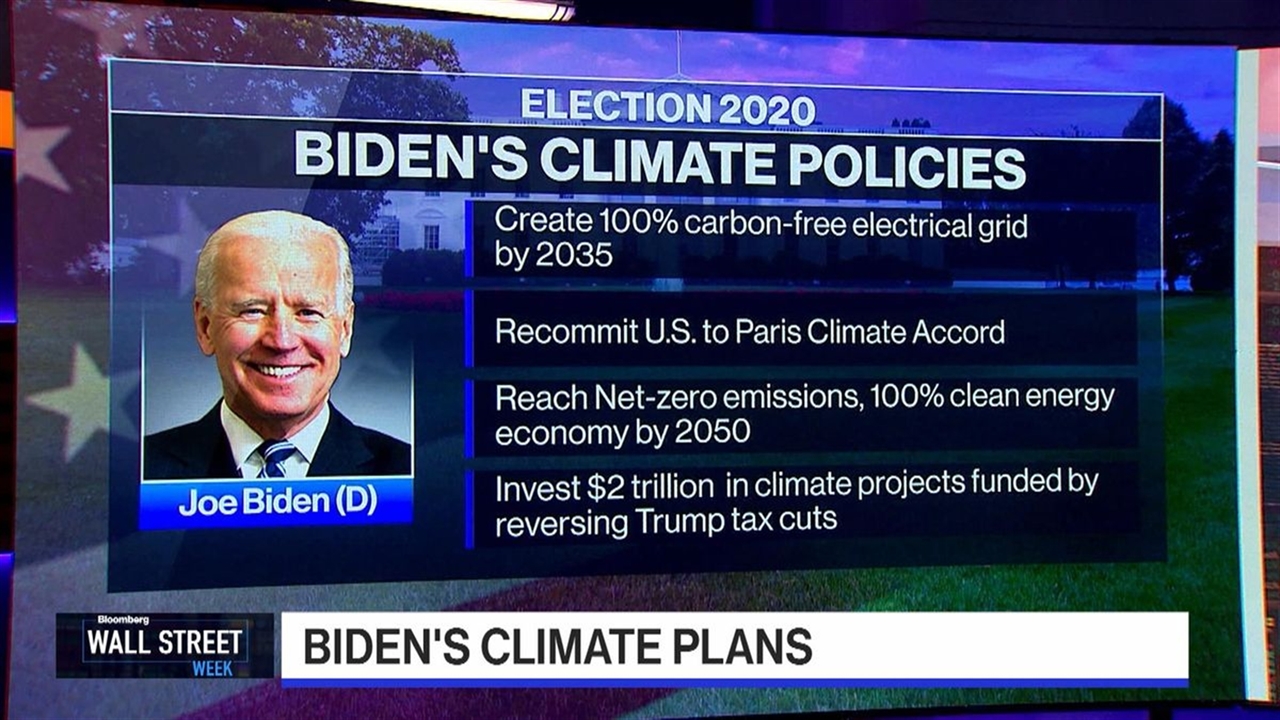
Rich Countries Still Don’t
Want to Pay Their Climate Change Tab
Umair Irfan / Vox
(November 13, 2021) — Climate change has a central injustice: The parts of the world that contribute the least to global warming stand to suffer the most as temperatures climb.
Rising sea levels, hotter heat waves, and more frequent torrential downpours disproportionately hammer low-lying coastal areas, islands, tropics, and deserts that are home to people who historically haven’t burned that much coal, oil, or natural gas. The slow and acute impacts of climate change are already destroying homes, forcing migrations, and taking lives, particularly in countries that have few resources to begin with.
According to the United Nations Office for the Coordination of Humanitarian Affairs, the most vulnerable countries to climate change include Haiti, Myanmar, Mozambique, Zimbabwe, and the Bahamas.
Meanwhile, major producers and consumers of fossil energy, like the United States, have become the wealthiest countries in the world. That wealth also means more government and private resources to respond to a warming world, whether by building infrastructure to withstand higher tides, managing forests to reduce severe wildfires, or compensating citizens for their flood-ruined homes.
That inequity is the undercurrent of the United Nations’ ongoing COP26 climate negotiations in Glasgow, Scotland. The meeting is an opportunity for major polluters and those suffering from the effects to sit across from one another — and the countries bearing the brunt of global warming say that addressing this central injustice must be at the core of any climate agreement. Otherwise, hopes of reaching concordance on other key climate issues could fall apart.
“The largest share of the historical emissions originated in developed countries,” Diego Pacheco Balanza, head of the Bolivian delegation to COP26, told reporters Thursday. “So there is a historical responsibility of developed countries and [industrialized] countries to deal with the climate crisis.”
The most concrete way to fulfill this responsibility is to pay for it. And some wealthy countries at COP26 have said they will — to an extent, at least, and in principle.
“The countries most responsible for historic[al] and present-day emissions are not yet doing their fair share of the work,” British Prime Minister Boris Johnson said at the start of the summit.
The actions so far, however, are still lacking. “There were a lot of very positive statements,” said Janine Felson, deputy head of the Belize delegation and an adviser to the Alliance of Small Island States, a negotiating bloc of 39 island and low-lying countries. “What we are seeing, though, in the [negotiating] room is very different. It’s more business as usual, so rhetoric and deed are far apart.”
At COP26, several governments — including the US and the UK — have announced additional funding to aid low-income countries in transitioning toward clean energy, as well as more cash to help them cope with the unavoidable losses from climate change.
But the amount of money on the table still doesn’t meet past commitments, and it’s not enough to cover the enormous changes that are needed, negotiators from developing countries say.
Without settling the money issue, COP26 negotiations on other matters — trading carbon credits, phasing out fossil fuels, timelines for reducing greenhouse gas emissions — could stall or fall apart.
“Climate finance is the glue that brings a package together at the end of a COP,” Richie Merzian, director of the climate and energy program at the Australia Institute, told reporters Thursday.
With the talks heading into their final day, the pressure is on wealthy governments to contribute more money toward global efforts to lower emissions. “My message to donor countries is very, very clear: Without adequate finance, the task ahead is nigh impossible,” said Alok Sharma, president of COP26.

Rich Countries Still Aren’t Meeting
Their Commitments on Climate Finance
At the 2009 COP15 meeting in Copenhagen, wealthy countries set a target of pooling $100 billion by 2020 to help less wealthy countries adapt to changes in the climate already underway as well as to curb greenhouse gas emissions. The money, from public institutions like governments rather than private banks, would be deployed as a mix of loans, investments, and grants across initiatives from decarbonizing power generation to building seawalls.
The target was missed. The last tally shows that $79.6 billion in international climate financing was awarded in 2019. Now the goal post is 2023 for the $100 billion goal, given the current pace of commitments.
Negotiators in developing countries have been pushing to close that gap even faster and want the final agreement from the COP26 meeting to highlight their “serious concern” that the amount of financing available is not enough to cope with what’s needed to cope with climate change. They also want the text to emphasize that wealthy countries are required to contribute more money to climate financing programs.
“Finance is not the charity of developed countries to the developing world,” Pacheco Balanza said. “Finance is an obligation.”
At the same time, there are immense financial to mitigating climate change. One estimate found that shifting the global economy toward sustainable energy would save the world $26 trillion by 2030. But the costs of mitigating climate change and the benefits often accrue to different people, and it’s proven difficult to leverage that in negotiations.
Now, some developing countries now say they need vastly more money to meet their goals. India, the world’s third-largest greenhouse gas emitter, committed at COP26 to reaching net-zero emissions by 2070. But it says it wants $1 trillion in international climate financing by 2030 to meet its goal. African governments have said that climate finance funding should reach $1.3 trillion per year by 2030.
It’s likely that the $100 billion funding target will be solidified at COP26 with the momentum underway. However, it’s unlikely these far greater demands will be considered, given that parties to the Paris agreement failed to meet a much smaller objective on time.

Who Will Pay for Climate Devastation
In the Most Vulnerable and Poorest Places?
Many of the talks at COP26 focus on climate change mitigation — what countries will do to reduce greenhouse gas emissions, what their targets should be, when they should reach them, and what tactics count toward their goals.
But the world has already warmed up by 1.1 degrees Celsius compared to global average temperatures before the industrial revolution, and that warming is already having effects. Global sea levels, for instance, have already risen 8 to 9 inches, leading to more devastating storm surges.
Dealing with the changes in climate already underway is a high priority for countries like island nations seeing their land swallowed up by rising seas and seeing disasters amplified with more rainfall and higher heat.
In COP-speak, this is known as loss and damage. There is a mechanism for dealing with this under the 2015 Paris climate agreement, building on an earlier framework known as the Warsaw International Mechanism. One estimate found that loss and damage from climate change would cost the world between $290 and $580 billion a year by 2030. And losses can go beyond those that are easily priced, like cultural heritage and ecosystems degraded by rising average temperatures.
The trouble is, there isn’t a set goal for how much money should be allocated to loss and damage, who is required to chip in and by when, and how that money should be distributed. And crucially, loss and damage has been largely excluded from discussions around climate finance.
“We heard a lot of about solidarity [from wealthy countries] for the losses and damages in our experiences,” said Felson. “But if, in the finance room, I raise loss and damage, I hear that it’s a red line. We can’t talk about life and damage in finance [discussions].”
For countries like Belize, the goal is to have a system that doesn’t respond to climate-related disasters and damages on a one-off basis like an emergency relief fund. Rather, they want a systematic approach that delivers consistent money not only in wake of hurricanes and wildfires, but for slow-moving problems like the decline of barrier reefs and falling crop yields.
On Thursday, Scotland announced that it would contribute £2 million to a loss and damage fund, making it the first country to chip in.
Money has also been allocated at COP26 to indirect measures that relate to loss and damage. Twelve donor governments pledged $413 million in new funding for the Least Developed Countries Fund, which helps countries like Gambia and Togo cope with the effects of climate change. The UN’s Adaptation Fund also announced it raised $351.6 in new pledges.
One of the big obstacles though is that wealthy countries do not want any language in a loss and damage agreement that hints that they are liable for climate change. Some are already pushing back against the loss and damage language in the draft agreement.
“With wealthy countries, it’s always a fear of some kind of reparations framework coming out which will impose higher and higher costs,” said Rachel Kyte, an advisor to the climate negotiations and dean of the Fletcher School at Tufts University. “They’re prepared to talk about today and tomorrow. They don’t want to talk about yesterday.”
Negotiators for countries facing the brunt of climate impacts now say they at least want to get the ball rolling on paying for current climate destruction. They are calling for language in the COP26 agreement to create a dedicated funding mechanism for loss and damage and give it long-term stability.
But as the negotiations head into their final day, with so many outstanding issues, loss and damage may once again end up shelved until the next COP.
Posted in accordance with Title 17, Section 107, US Code, for noncommercial, educational purposes.